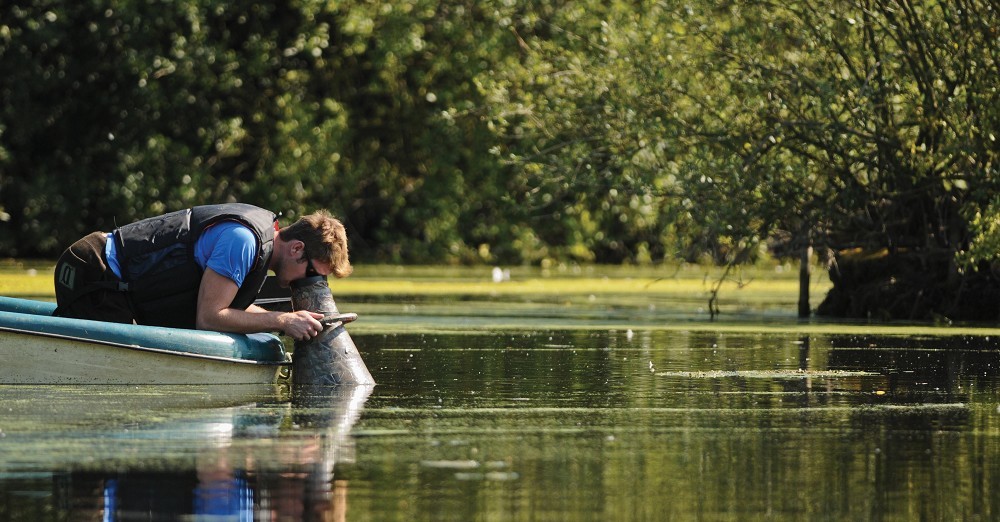
Boat fishing and feeding spots
Jimmy explains exactly what type of spot he’s looking for
I’ve carried out quite an extensive amount of boat fishing the last few years, adapted my angling to suit and I feel that I can really pinpoint a natural feeding spot. This has given me experience into gauging whether an area may be the beginning of a hotspot or whether it has slowed down or even blown.
An Aquascope has become like a third arm to me. For those of you that don’t know what one is, it’s basically a posh glass-bottomed bucket which allows me to see subsurface. Beneath the water is a huge kingdom of spots: weed, clay, gravel, sand, silt, but where do you start to apply bait, and more importantly where do you position your rig?
On many of my waters I have the luxury of positioning my bait via a rowing boat. This opens up a whole host of opportunities, namely the accuracy. After much experimentation on spots on many different waters I always keep going back to the same sort of make up. You can catch on most of the lakebed, but certain areas will be far more productive than others. It might be that the bottom’s too clean and polished, meaning that fish can deal with your rig easier. It could be that they can spot something alien to them: the glint of the hook, the lead or whatever.
I stay clear of ‘polished off’ areas that so many say you should target. They are just too obvious. What I’m looking for are those grey, clean areas with the odd fleck of gravel. Quite often you’ll locate these amongst weedbeds. They’re the start of a spot and need to be harvested with bait. Quite often you’ll find that it’s a light silt and below that there will be hard gravel. The silt will disguise your rig too!
I look for such areas from the bank too and explore weedbeds trying to get that clean drop that reveals these little hotspots. They’re not machine-gun gravel, they just feel smooth with the odd tap on the tip. If you ever get the use of a boat, do some exploring, you’ll be amazed and know exactly what I’m talking about.



